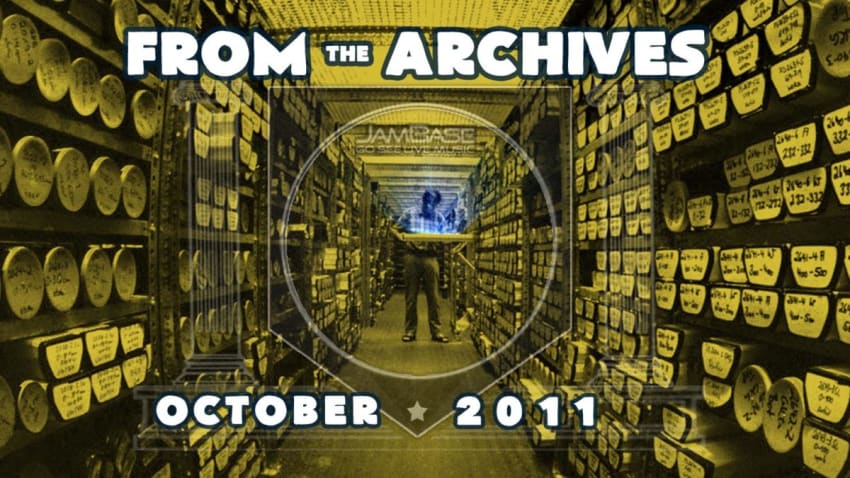A Chat with Eliot Lipp
By Team JamBase Oct 28, 2011 • 6:53 am PDT

 |
We caught up with Eliot Lipp to discuss his latest project, playing live and his approach to making music.
JamBase: A lot of electronic music, particularly because of the culture it comes out of, is designed to stand alone so it can be worked into DJ sets in the live setting. The thing about How We Do: Moves Made is how it really hangs best as an album rather than compartmentalized bits.
Eliot Lipp: I always try to do that. All the albums I’ve released are like that. I’ve released a few singles here and there, but I’ve never really tried to make my tracks DJ friendly. I like to approach each song as its own thing rather than applying the template out there for making a readymade club track. The music is more unique when your whole approach to the song is to serve the vibe the song is asking for.
JamBase: The titles of the songs speak to that kind of conscious listening, with the music and the pointing words of the title forming a cohesive bridge.
Eliot Lipp: Well, thank you! I’m glad you got it [laughs].
It shows a level of care that, put bluntly, is often missing from contemporary electronic music, which is often built around sensation and stimulation over anything musical.
 |
We usually start by playing each other samples. We both like to dig. We’re both going through stacks of records constantly, pulling loops and samples from here and there constantly. We’re both really into jazz and funk records and classic rock. But I sample from all over the place, even from recent records. We’ll listen until we find that thing. We both like to take something someone else has already created and then rearrange it and make a collage with other samples. That will help set the base for the melody and what key we write the song in. Then we both start jamming on it. He’s got a studio in Tacoma, WA and I’ve got a studio in Brooklyn, so we’re always working in one or the other studio. We both have a collection of keyboards, so we’ll use those to get a loop going until it clicks and we can hear where the song is going. Usually we don’t speak to each other. We just sit there, looping and playing, and we’ll hear it and start recording.
 |
[Laughs] That’s awesome!
How do you approach playing live? What’s different from your studio process?
Right now, I have a drummer and I’m playing keyboards and triggering all the MIDI stuff with my laptop. When I play live I play songs from all my projects. So, we’ve been playing a few songs from this new album, and I remixed the tracks to remove the drums so my live drummer can play the same beats on top of the backing track. I also remove the synth parts so I can play those live. Ultimately, I’d like to have a 10-piece band onstage. These get really layered, but I don’t have a huge band to execute that live yet. I’m definitely building towards that. I’ve started working with a guitarist who also plays keys who will join the band next year.
We always have a couple parts in the set where we’ll let the song finish and just keep going out into wherever. I don’t come from a real live music background, so I approach it as a producer. So, improvisational moments are fun for me but I don’t have any real training. It’s cool though, and pretty easy to figure out. It’s great to just create a moment in the middle of the set. I’m getting really into that and hope to push more into that for a couple moments in set. There’s some bands that let it get out of hand, noodling for too long, but I think if you do it tastefully it can be a really awesome addition to a live performance.
As electronic music continues to move into the forefront of the festival circuit and mainstream culture it’s going to become necessary to add elements like improvisation. You can only go so far with one guy behind some decks when you’re playing to 25,000 people.
 |
How do you find electronic music is evolving as it hits amphitheatre or larger size crowds?
One thing that happens is your music needs to be more intense, or as you put it earlier, stimulating. When you take a bedroom producer or this headphone music and you try to play it in front of a huge crowd it doesn’t always work out [laughs]. A lot of my music is intimate, mellow, and more downtempo. But at the same time, it’s all across the board. I have songs that are bigger and more high energy. I just try to pick the right ones to play live. I try for a balance. I want to keep my set really musical and engaging. A lot of times I’m playing in clubs immediately after a DJ that’s playing straight up dance music. That shift in energy can be a little strange. Even though I’ve been doing it for years and years and years, I still feel like I’m just getting the hang of it.
Eliot Lipp Tour Dates :: Eliot Lipp News
JamBase | Out There
Go See Live Music!
